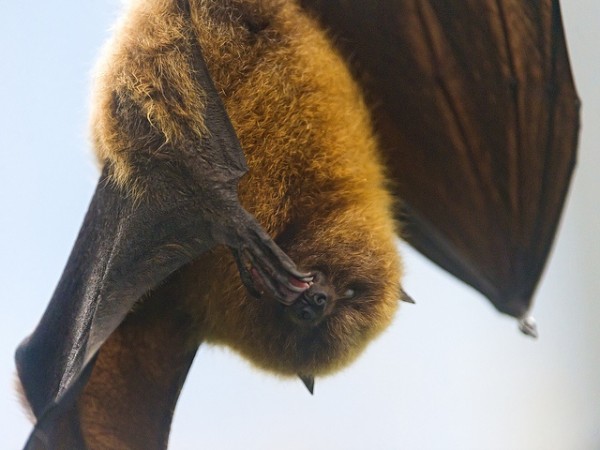By Ana Verayo, | September 10, 2016

Bats apparently waggle their heads and perk up their ears during a hunt like dogs do.
In a remarkable discovery, scientists observed how bats apparently wiggle their heads to the side, similar to what dogs do.
In a new study by researchers from Johns Hopkins University, lead scientists Melville J. Wohlgemuth from the Department of Psychological and Brain Sciences of the Krieger School of Arts and Sciences, this has been seen as "adorable behavior" however, we were curious about its main purpose, and it appeared as if the bats are doing this to target their prey.
Like Us on Facebook
Wohlgemuth and team determined that this head movement that consists of waggling and ear wiggles are apparently in synch with the bat's sonar vocalizations during hunting. This head movement also enhances these signals that are received via sight and hearing, that is also more seen in dogs and cats.
Bats use echolocation to detect and track its prey however, researchers documented this unique head movement for the first time ever, shedding more light to its mysterious head and ear behavior during a hunt.
During observations, scientists studied a common bat species, called the big brown bat, that can hunt in the wild and within cluttered environments.
Reflective markers were attached to the bats' head and ears to precisely measure their positions as they tracked mealworms attached to a fishing line as bait.
The head movement occurs once every second and when the prey changes direction, it moves in an erratic manner. When the bait becomes closer, the ears perk up and flatten, revealing twitches that can aid the bat using their echolocation.
As these head and ear movements happen simultaneously, it also coincides with the bat's vocalizations, occurring every millisecond to target its prey with more precision.
Researchers conclude that by studying these movements, new insights are gained about how animals study and sense their habitats and environments.
This new study is published in the journal, PLOS Biology.
-
Use of Coronavirus Pandemic Drones Raises Privacy Concerns: Drones Spread Fear, Local Officials Say

-
Coronavirus Hampers The Delivery Of Lockheed Martin F-35 Stealth Fighters For 2020

-
Instagram Speeds Up Plans to Add Account Memorialization Feature Due to COVID-19 Deaths

-
NASA: Perseverance Plans to Bring 'Mars Rock' to Earth in 2031

-
600 Dead And 3,000 In The Hospital as Iranians Believed Drinking High-Concentrations of Alcohol Can Cure The Coronavirus

-
600 Dead And 3,000 In The Hospital as Iranians Believed Drinking High-Concentrations of Alcohol Can Cure The Coronavirus

-
COVID-19: Doctors, Nurses Use Virtual Reality to Learn New Skills in Treating Coronavirus Patients







